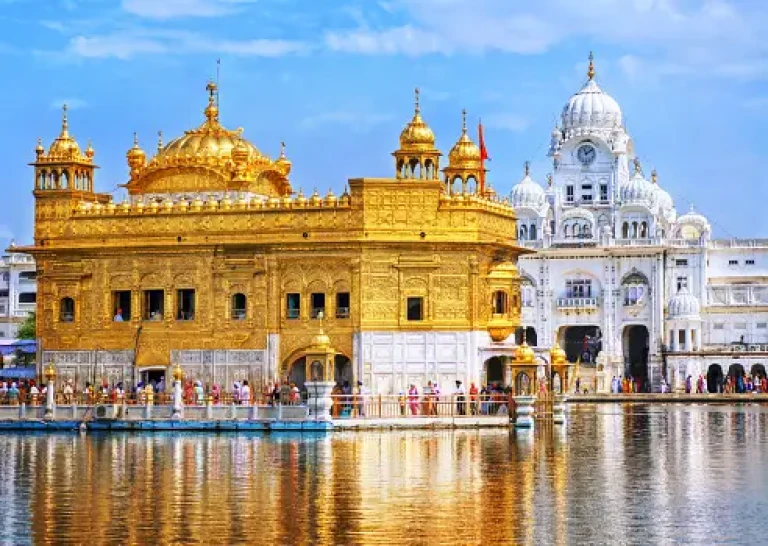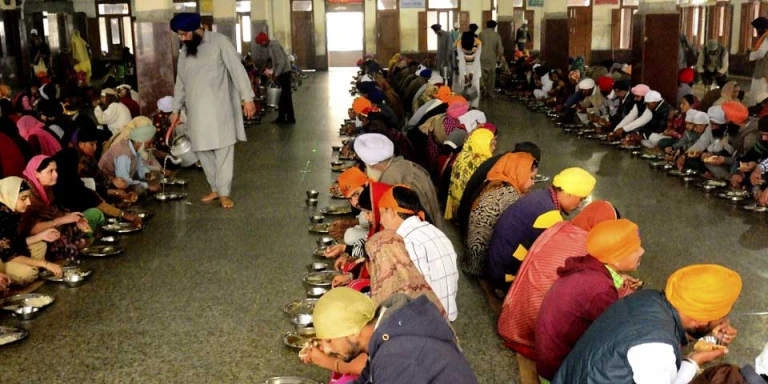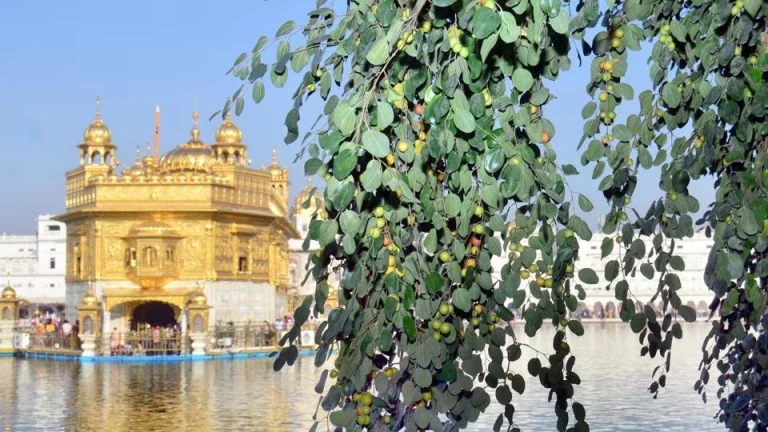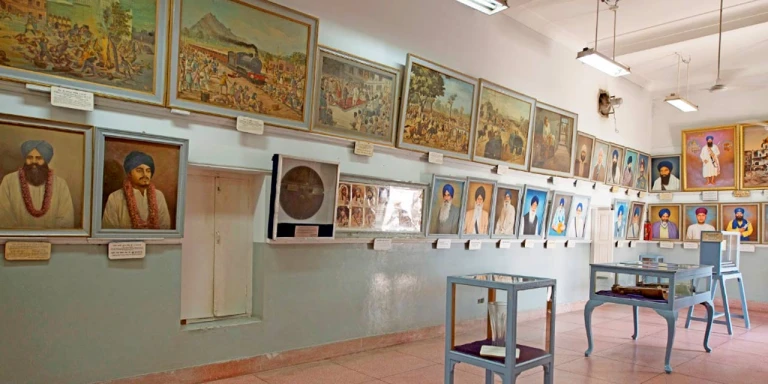Golden Temple Amritsar: All You Need to Plan Your Visit
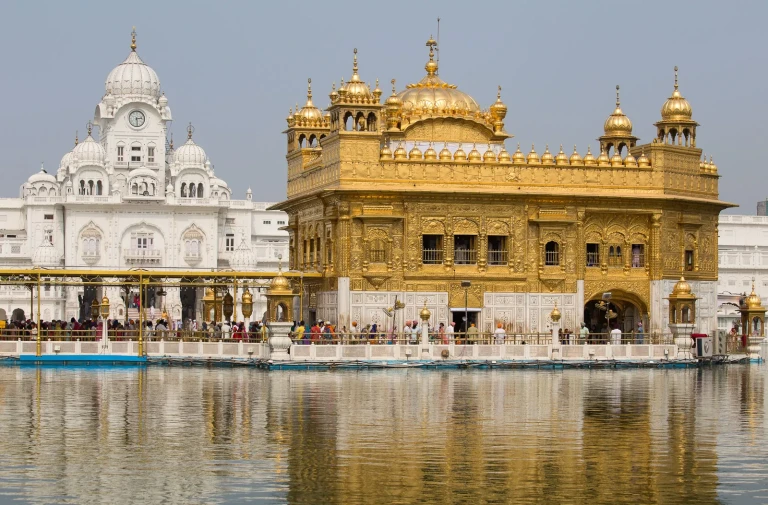
224 years after Guru Ram Das Sahib's creation of the Golden Temple in 1604, it was covered in 24-karat gold. It has been repeatedly destroyed by Afghan and Mughal forces, yet it still represents humility.
In the 1990s, a four-year project to re-plate the temple with 500 kg of gold was completed. In order to represent humility, the temple was constructed lower than the surrounding ground, symbolising the importance of bowing down and humbling oneself before entering.
The intricate architecture and design of the Golden Temple showcase a blend of Hindu and Islamic influences, reflecting the inclusive nature of Sikhism.
What you should know before visiting the Golden Temple
There is a dress code, albeit not formally.
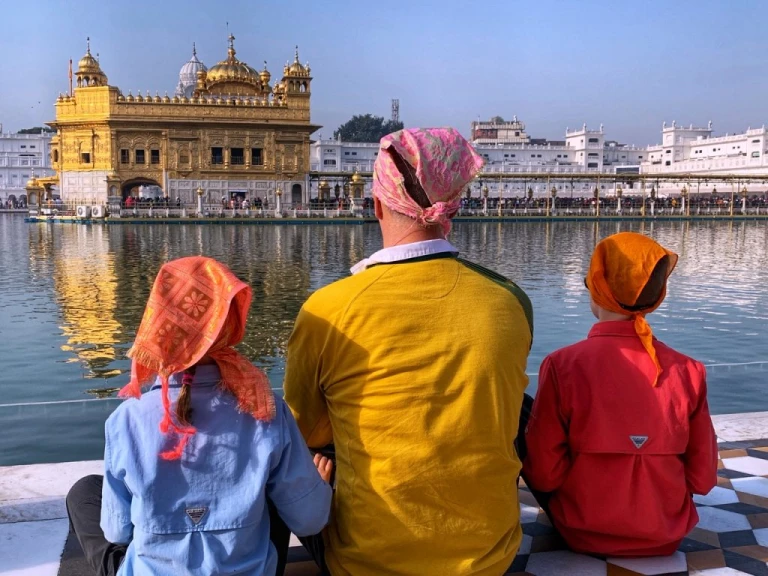
The Golden Temple in Amritsar is a holy place, so visitors are expected to dress modestly. They should cover their shoulders and knees, and remove their shoes before entering. A shoe-drop-off service is available on the left side of the temple.
After dropping off shoes, wash your hands near the entrance and cover your head. Free head-covering clothes are available at the temple entrance. These can be found in Amritsar's streets, but not necessary unless desired.
Photography is prohibited.
2019 saw an abrupt prohibition on photography and filming within the Golden Temple. This restriction was put in place to protect the privacy and dignity of the religious ceremonies taking place within the temple. It is urged that visitors abide by this prohibition and forgo taking any pictures or movies while they are there.
The Golden Temple is a sacred place for Sikhs, and it is important to respect their customs and traditions. Taking pictures or filming can be seen as disrespectful and intrusive to the worshippers. It is recommended to fully immerse oneself in the spiritual experience and appreciate the beauty of the temple without the need for photography.
Volunteering in the temple
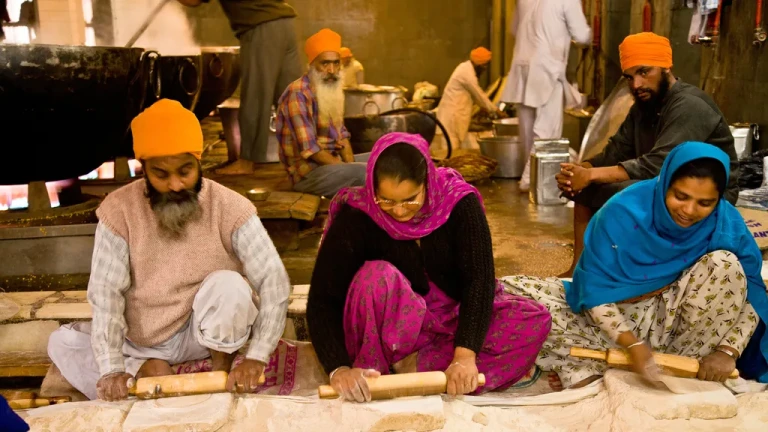
Volunteers manage the Golden Temple's free kitchen, which promotes unity and humility in Sikhism by not just maintaining the langar but also experiencing selfless service. This promotes inclusiveness and understanding among people from all backgrounds. Volunteering is as basic as cleaning dishes or serving meals.
It adds to the temple's long-term viability as well as the delight of selfless service. Volunteers also learn about Sikh customs and culture, which broadens their understanding of the faith. Working together strengthens ties and fosters a sense of community that transcends religious divides. Because of this common experience, the temple becomes a welcome place for all guests.
You can stay at the Golden Temple for free, and it is always open.
It is possible for guests from various backgrounds to enjoy the friendliness and hospitality of the Sikh community since the Golden Temple and communal kitchen are open twenty-four hours a day. Free meals are provided by the Langar community kitchen, which advocates for inclusion and equality.
Tourists and Sikh pilgrims alike are welcome to stay at the temple for free for a maximum of three days in a hostel with a common bathroom. This action exemplifies the Sikh community's dedication to welcome people of all origins and promoting harmony and unity among guests. Tourists can also stay on the temple grounds, which offers a convenient and comfortable lodging alternative.
Additionally, the temple grounds provide a serene environment for meditation and reflection.
Things to see at the Golden Temple
There are a lot of sights to view in the Golden Temple complex, which is rather large. The most significant ones are listed here.
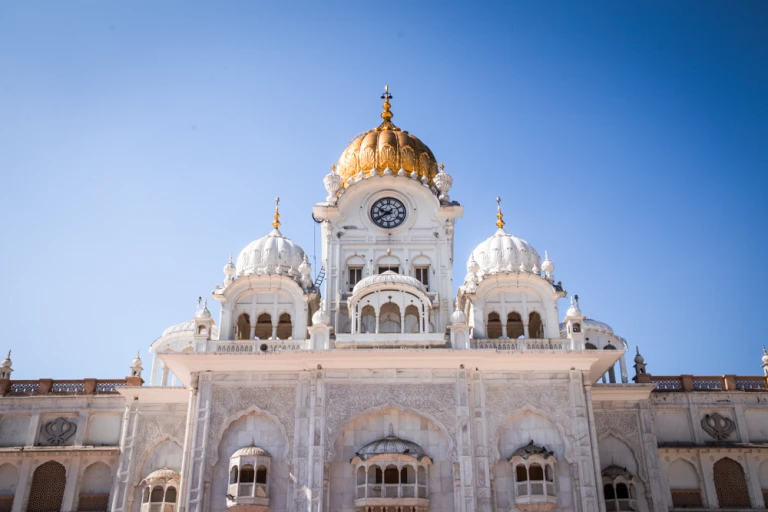
Ghanta Ghar Deori
The primary entrance to the Golden Temple is the clock tower, also known as Ghanta Ghar Deori, which has great historical significance. Built in the first decades of the 20th century, it serves as a representation of both architectural excellence and cultural legacy.
The tower is a must-see sight for tourists because of its exquisite craftsmanship and unique design. This tower was not originally intended to be a component of the temple. Here formerly stood another structure now known as "the lost palace".
The Sikh community protested the demolition of this structure, but the British colonials disregarded it and replaced it in 1874 with a red-brick clock tower. The Sikhs destroyed this clock tower and erected the one in its place after the British withdrew in 1947.
Harmandir Sahib
The main temple, Harmandir Sahib, has been referred to as the Golden Temple and is regarded as the most sacred site in the Sikh religion. Guru Arjan Dev, the fifth Sikh Guru, constructed it in the sixteenth century.
A sacred pool known as Amrit Sarovar surrounds the temple complex and is thought to have therapeutic qualities. Every year, millions of people visit the Harmandir Sahib to find spiritual comfort and take part in the langar, a communal kitchen that provides free meals to everybody.
Langar
The Golden Temple is famous for housing the world's biggest community kitchen, known as the "langar," which offers free meals to all guests regardless of faith or socioeconomic position. The langar is a symbol of equality and selfless service, encouraging all participants to be united and humble.
It costs millions of dollars to maintain each year, due to contributions and volunteers. The langar is open 24 hours a day and welcomes people of all religions, castes, and colors. The beauty of Sikhism is that it sees everyone as equal, and the menu changes daily.
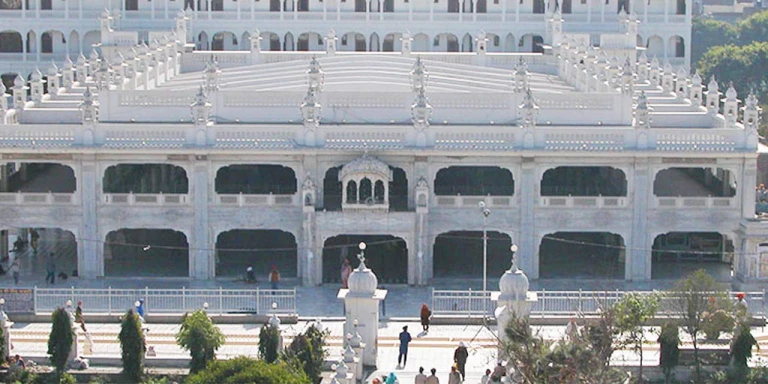
Diwan Hall
The Golden Temple's main prayer hall is located here. It can hold a stunning 5,000 people, and this is where a so-called Granthi reads the Guru Granth Sahib, the sacred text of Sikhism, each day. Devotees congregate at the Diwan Hall, a hallowed location, to participate in the recitation of songs and prayers.
People from all walks of life gather here to seek spiritual comfort and direction, and the mood is one of dedication and reverence. The mellow voice of the Granthi fills the whole auditorium, bringing the worshipers together in harmony and peace.
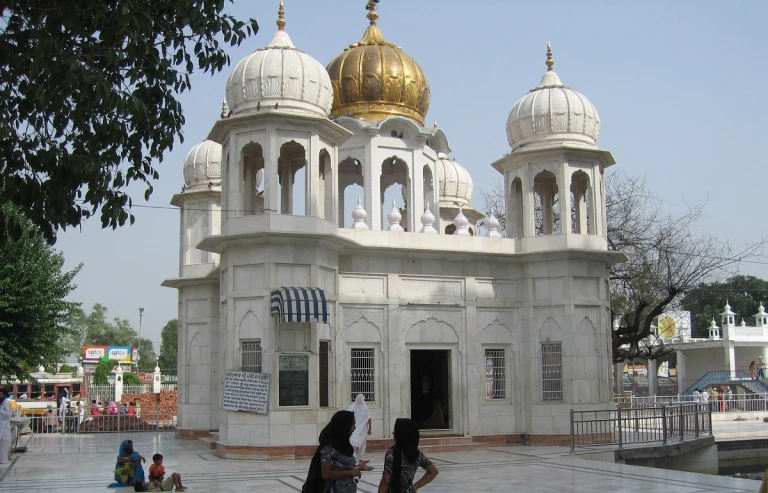
Gurudwaras
Other gurudwaras can be found in the Golden Temple complex in addition to the temple itself. The most notable ones include Gurudwara Thara Sahib, Gurudwara Manji Sahib, and Gurudwara Baba Atal Rai.
These gurudwaras are revered worldwide and are of historical value. The complex's spiritual atmosphere is enhanced by Gurudwara's distinctive architecture and style.
Visitors to these Gurudwaras can pay respects, take part in prayers, and learn about the rich Sikh tradition. The Sikh community holds these Gurudwaras in the same regard, and they regularly draw devotees looking for knowledge and comfort in their spiritual lives.
Every Gurudwara has a distinct architectural style and historical importance, adding to the diversity of the rich tapestry of religious devotion within the Golden Temple complex.
Also Read:
Sacred trees
Three ancient jujube trees, Ber Baba Budha Sahib, Dukh Bhanjani Beri, and Elaichi Ber, all over 400 years old, can be found in the Golden Temple complex.
They represent the rich history and curative powers of Sikhism. The prayers and threads that devotees frequently wrap around these trees represent their faith and want for favors.
The presence of these trees improves the spiritual ambiance by offering believers a peaceful setting in which to connect with their beliefs.
Central Sikh Museum
The Central Sikh Museum showcases a vast collection of artifacts, paintings, and historical documents that depict the journey and teachings of Sikhism.
Visitors can gain a deeper understanding of the religion's rich heritage and its impact on society through interactive exhibits and informative displays.
Exploring the museum provides a valuable educational experience for both Sikhs and non-Sikhs alike, fostering cultural appreciation and promoting religious tolerance.
The best time to visit Amritsar and the temple
Winter
Amritsar is best visited between November and March when the weather is nice and conducive to outdoor activities. Furthermore, going to the Golden Temple during these months gives tourists the chance to take in the lively celebrations of significant Sikh holidays like Guru Nanak Jayanti and Baisakhi. The city comes to life with vibrant processions, fervent spiritual fervor, and devotional music, providing visitors with a memorable experience.
Summer
For those who can handle the heat, visiting Amritsar during the hot and muggy summer months of April to June is still worthwhile. The summertime presents a special chance to discover the city's historical buildings and landmarks without throngs of tourists, making for a more personal encounter. A wonderful touch to your journey and a way to combat the summer heat is to indulge in local food and sample cool drinks like lassi.
Monsoon
The monsoon season, which has hot, muggy weather and heavy rains, lasts from July through October. Even while the weather may not be suitable for outside activities, this time of year highlights the city's rich flora and creates a peaceful atmosphere. Monsoon season is a captivating time to visit Amritsar's iconic Golden Temple because the rain lends an otherworldly quality to the temple's splendor. However, it's crucial to be ready for sudden, intense downpours and make indoor activities a priority.
Best Time
Early morning visits and weekdays over weekends are the best times to visit the Golden Temple to avoid crowds, as weekends may be highly busy. It is advised to choose a weekday for a more pleasurable encounter.
Other places to visit in Amritsar
Once you've finished touring the Golden Temple, Amritsar has a lot more attractions to offer. The most significant ones are listed below.
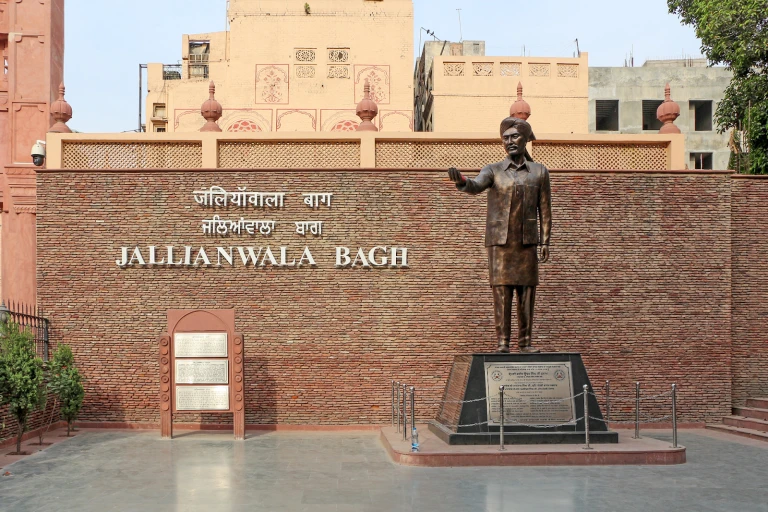
Jallianwala Bagh: Jallianwala Bagh is a historical site that commemorates the tragic massacre that took place in 1919. It is a must-visit for history enthusiasts and those interested in learning about India's struggle for independence.
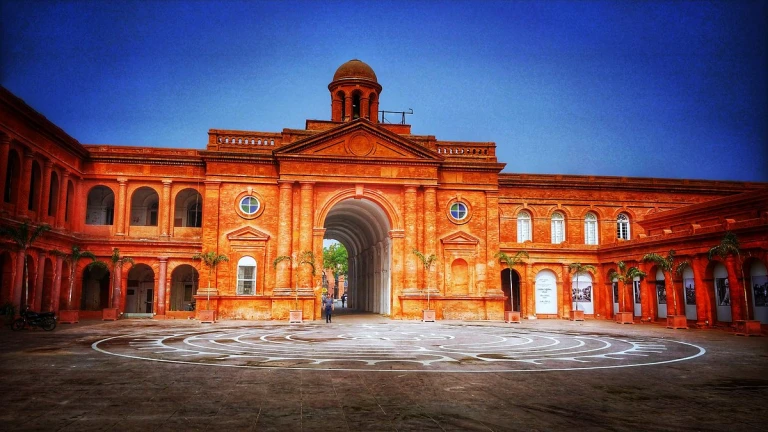
Partition Museum: The Partition Museum is a unique museum that documents the partition of India in 1947 and its impact on millions of people.
It provides a comprehensive understanding of this significant event in history through various exhibits and personal stories.
Another notable attraction is the Golden Temple, a sacred Sikh shrine known for its stunning architecture and spiritual significance.
Visitors can experience the peaceful atmosphere and participate in religious rituals at this iconic site.
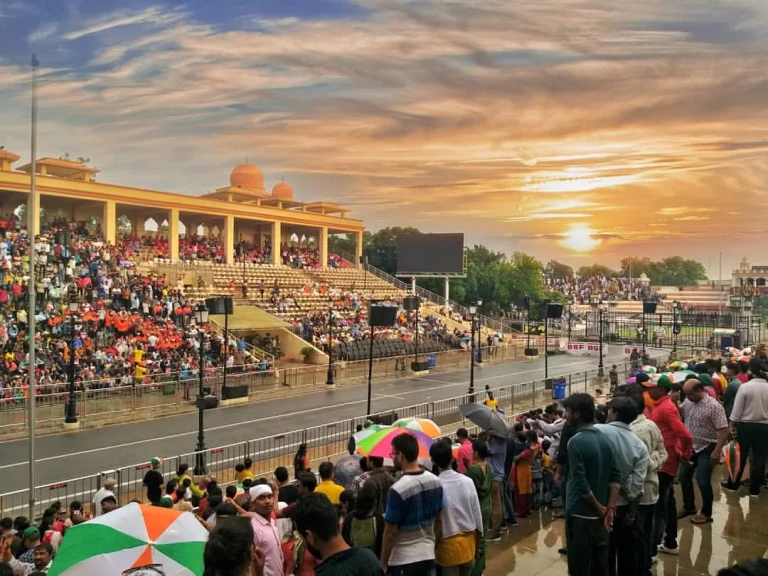
Wagah Border Ceremony: A must-see attraction near Amritsar is the Wagah Border Ceremony, a daily military ceremony that takes place at the India-Pakistan border.
This unique event showcases the patriotic fervor of both nations through synchronized marching, flag lowering, and high-energy performances.
Visitors can witness this spectacle and feel the electrifying atmosphere as they witness the border closing ceremony.
Also Read:
Amritsar offers a diverse range of experiences for travelers, from spiritual and historical sites to delicious food and vibrant festivals.
Whether you are seeking tranquility at the Golden Temple or want to immerse yourself in the energetic atmosphere of the Wagah Border Ceremony, Amritsar is sure to leave a lasting impression on visitors.
Subscribe to TripZilla
Get updated on travel deals and trip ideas!
Related Posts
10 amazing hacks for comfortable train journeys in India
Make your Indian train journey comfortable with these 10 hacks: choose the right class, pack essentials, stay hydrated, wear comfy clothing, charge devices, bring entertainment, prioritize safety, book lower berths, use travel apps, and socialize.
10 Backpacking Destinations in India that you must check out in 2024
In 2024, explore India's diverse beauty with these 10 must-visit backpacking destinations, offering mountains, beaches, and cultural gems for every traveler.
10 Beach Wedding Destinations in India for Magical Memories
A beach wedding in India is a dream come true for many couples, with its picturesque backdrop of golden sands, azure waters, and stunning sunsets. From the shores of Goa to the beaches of Kerala, this blog has the 10 best wedding locations for you!
10 Best Flea Markets in India for souvenirs and more
Embark on a shopping adventure in India with our guide to the 10 best flea markets, from the vibrant Dilli Haat to Goa's bohemian Anjuna market. Unearth unique souvenirs and experience the cultural richness of each location.
10 Best Trekking Destinations in India for October and November
The months of October and November provide the perfect weather conditions for outdoor enthusiasts to embark on exhilarating treks.
Latest Posts
Must Visit Eco-Tourism Spots in Himachal Pradesh
The Himachal Pradesh government has identified 11 eco-tourism sites across various forest divisions.
Text Excert: Escape to a sanctuary of tranquility amidst the verdant valleys and fragrant orchards of Pahalgam at The Orchard Retreat & Spa.
Ooty's 126th Flower Show: A Festive Journey in the Nilgiris
Step into a whimsical garden of dreams at the 126th Ooty Flower Show, where colors pop, fragrances swirl, and creativity blooms amidst the misty Nilgiri Hills.Discover a festival that celebrates nature's beauty, cultural heritage, and eco-conscious living
Heartbreaking Incident Highlights Impact of Flight Cancellations
In a tragic incident, Amrita couldn't reunite with her husband before her passing due to Air India Express flight cancellations, highlighting the profound emotional and practical challenges of unexpected travel disruptions.
Frequent Flyer Thief: Man Boards 200 Flights in 110 Days, Steals Lakhs in Jewellery
Uncover the shocking tale of Rajesh Kapoor, who stole lakhs in jewellery while boarding 200 flights in just 110 days. This incident highlights critical airport security gaps and the importance of vigilant travel practices.

